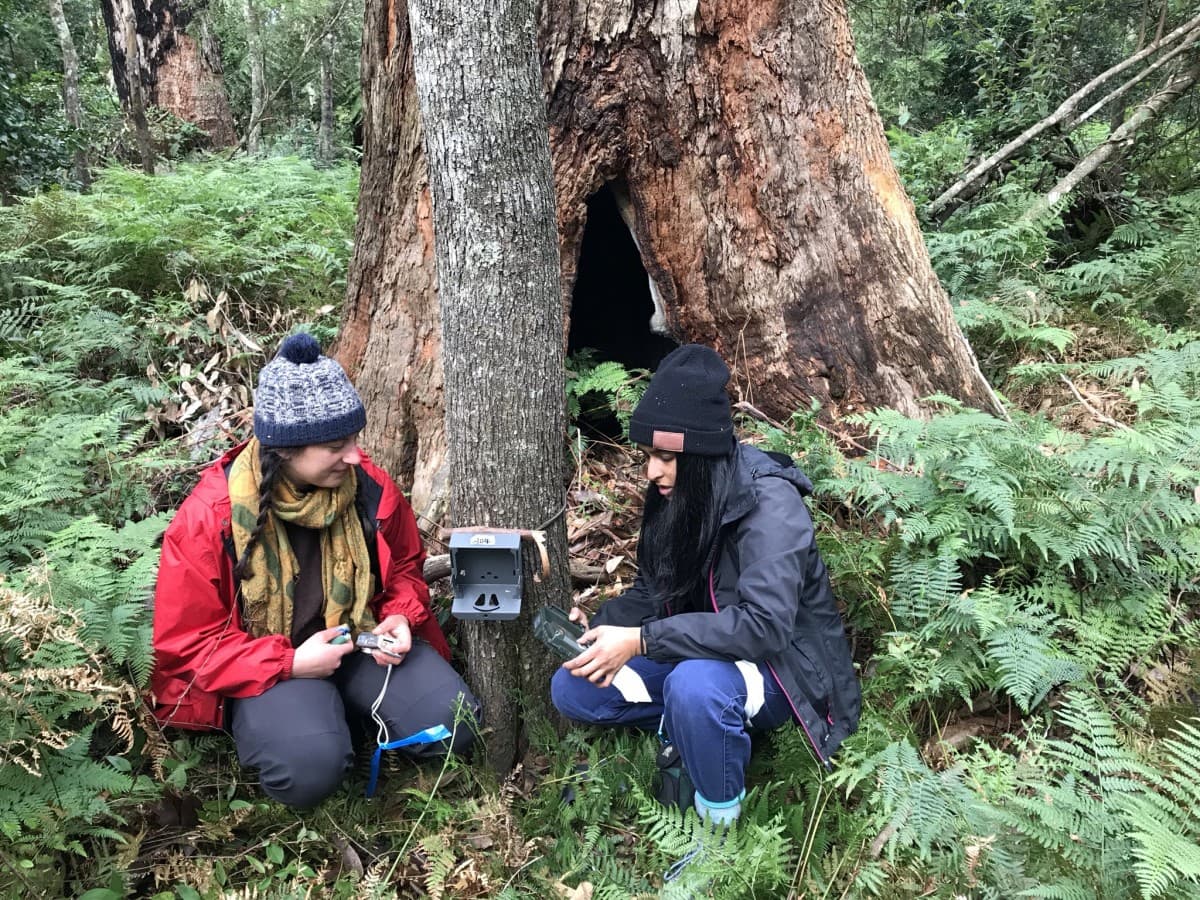Victorian National Parks Association
- Project: Life After Fire: citizen science monitoring of wildlife in bushfire-affected East Gippsland
- Amount: $220,144 over two grants
- Year(s) Funded: 2020 and 2021
Monitoring the recovery of native wildlife after the fires
The Black Summer bushfires in late 2019 and early 2020 in Central and East Gippsland had a devastating impact on communities, habitat and wildlife. For endangered species, it threatened to push them to – or past – the edge of extinction. Wildlife monitoring immediately after large bushfires is critical to determine the impact on wildlife populations and vulnerable species. Supporting communities in the recovery process is also critical, and connecting people with the evidence of recovery in natural areas can assist the healing process.

“It’s been fantastic to get out into the field with our volunteers to monitor wildlife for the ‘Life After Fire’ project. We are seeing firsthand the impact the fires have had on the environment and the amazing ability of the Australian bush to recover. The partnerships we are making and the data we are collecting will help us understand the impact the unprecedented bushfires had on wildlife in Gippsland and inform recovery efforts.”
DR SERA BLAIR, NATUREWATCH COORDINATOR, VICTORIAN NATIONAL PARKS ASSOCIATION
”Victorian National Parks Association will work with community, scientific and land management partners to ensure their research is relevant and valuable to strong conservation outcomes in the region. An estimated 390 volunteers will be trained in a range of scientific methods to capture data to inform how wildlife species and habitat are recovering at bushfire affected sites. This data will be used to inform future conservation planning, community campaigns and raise community engagement and awareness in wildlife conservation.
Wildlife and habitat monitoring will include methods such as:
-
- Eco-acoustic monitoring song meters (birds, mammals, frogs and bats)
- Motion-detection cameras (ground dwelling mammals and birds)
- Spotlighting (aboreal mammals)
- Scat (faeces) surveys (larger mammals)
- Photo points (vegetation density/growth).
- Increased knowledge of post-fire wildlife and habitat recovery will provide essential information on target species to land managers to support management interventions such as cat trapping programs and nest box installation.
- An HMSTrust Rapid Response grant in June 2020 enabled this bushfire recovery project to be fully scoped and developed, ensuring it was ready for implementation.